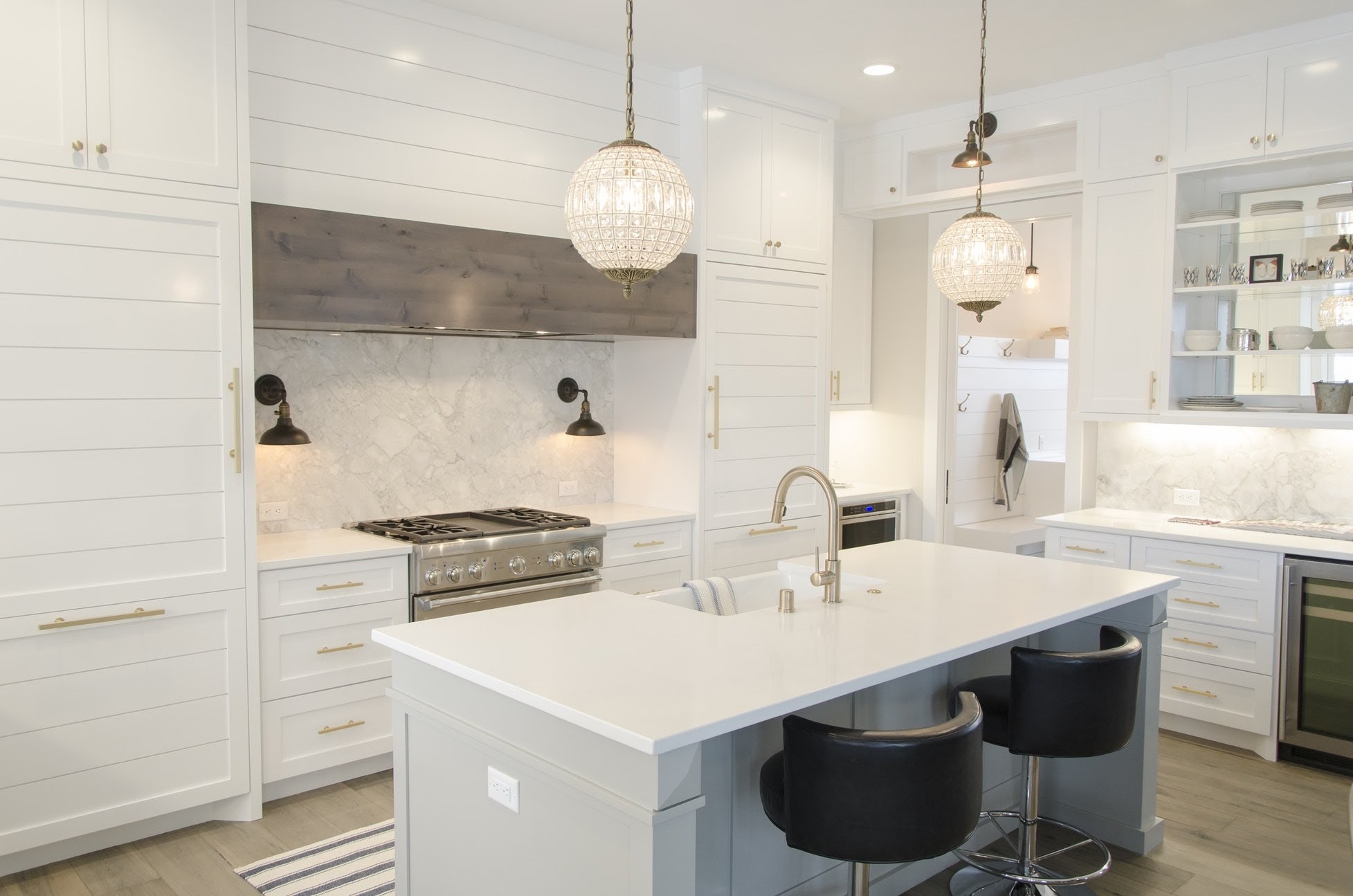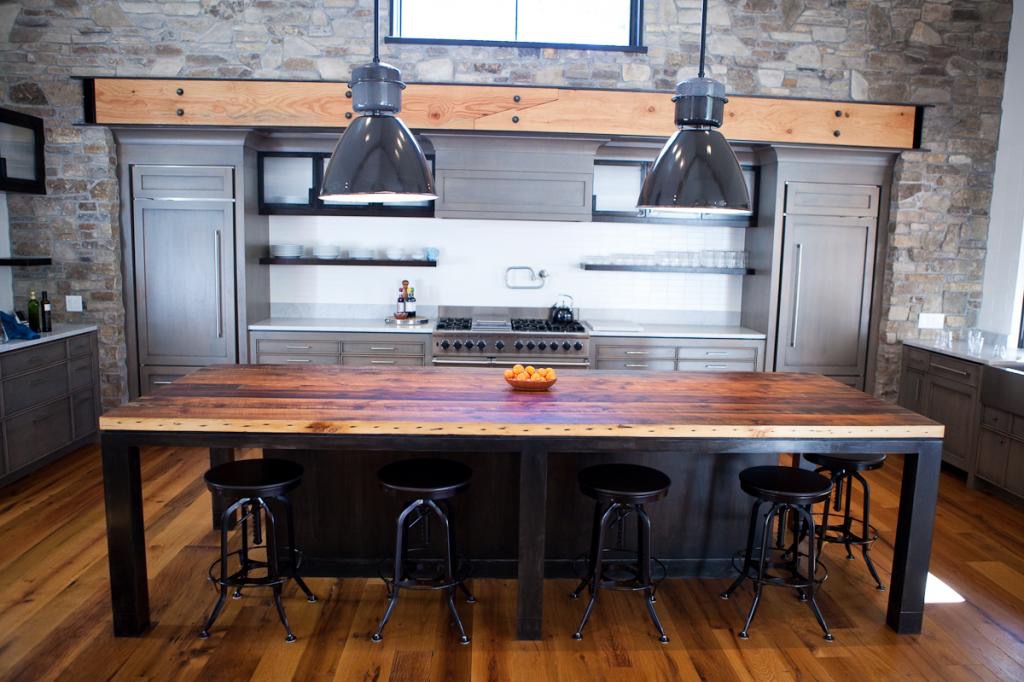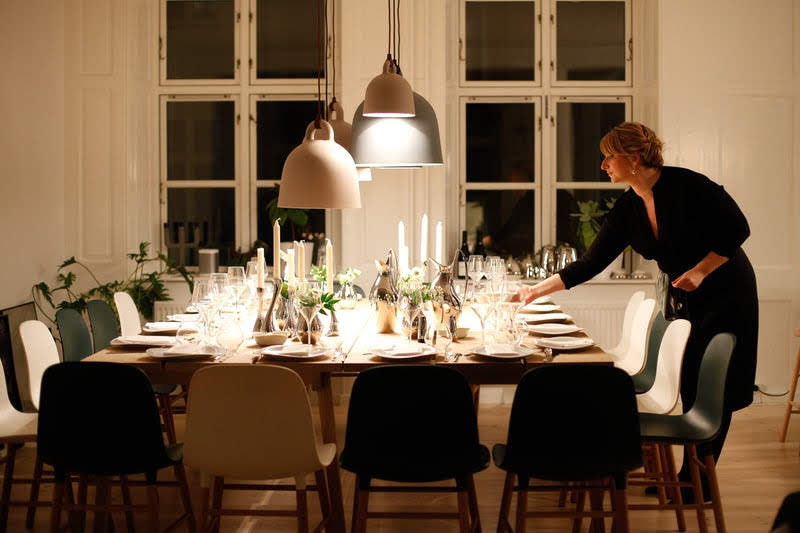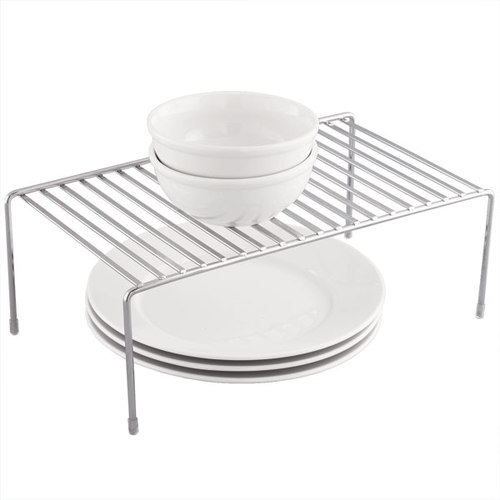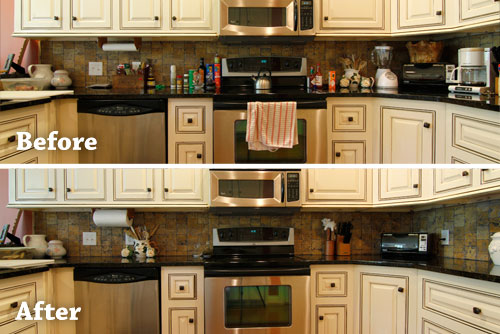With my interest in all things food, it naturally follows that I love being in the kitchen. Cooking is relaxing for me, and the kitchen is the hub of the home--what party were you at recently that didn’t end up there? My point exactly. And since, like many of us, I work full time, I want to come into a kitchen at the end of the day where it’s easy to make a wonderful meal.
At Organization & Relocation, we know the only way to make this happen is if the kitchen is organized, user-friendly, and lean. That means an annual purge and deep clean that sets the bar high--but not out of reach.
We start by emptying and cleaning every single drawer. Cleanliness always infuses a space with new energy. Next, we sort like items on the counter and look them over with a discerning eye. Is anything repeated? What is that ancient cherry pitter doing here, anyway? Are there utensils that don’t get used because a sharp knife will suffice? If so, I encourage my clients to give them away or recycle them. Not having to paw through your utensil drawer for five minutes looking for that elusive peeler is a beautiful thing.
We then transform the drawers with clear organizing trays, simply by puzzling together different-size trays that best accommodate the contents of each. The clear ones work well because you can really see what’s in them.
A “junk drawer” is essential to every kitchen, and it’s a great place to store those pesky things that never seem to have an obvious home--matches, pens, scissors, string, Post-it notes, etc. After the purge I suggest that my clients reassemble these random items (singing bottle opener, anyone?) in a different way to make sure they notice what’s in there. And yes: the junk drawer gets organizing trays, too!
Next on our thorough clean and purge list are the cupboards. It’s amazing how obvious the lesser-used items become when everything’s out and similar things are grouped together. Why are there so many mixing bowls? When was the last time that wok was liberated from its shadowy corner? We always attempt to improve the layout, depending on the client’s habits and favorites, as we replace items after the purge. We encourage clients to use the Org & Relo mantra: “Do I love it? Do I use it? Do I appreciate it?” This helps to make decisions without sentimentality confusing things.
Then come the food zones. Food gets edited with a ruthless eye, especially the classic, “This looks cool, I’ll try it tonight!” that’s still sitting there a year later. Shelves are wiped down and we only put back the items the client will use, grouped by type. Ergonomics are key to organizing any space, so we order in a way that makes sense for your needs—healthy and most-used items at eye level, baking items all together, pet food on the bottom (if your pet can be trusted!), sweet treats for kids on an upper shelf, etc. In the pantry we use containers with typed labels to group smaller items.
Keeping our kitchens organized and ready for action makes cooking a meal at the end of a long day a surprisingly stress-free experience. And you know what? That may be the most delicious local ingredient of all.
Happy Organizing!


